ALBRECHT DÜRER St. Jerome in his Study . Engraving, 1514. 246x189 mm; 9 3/4x7 1/2 inches, thread margins. A superb, early, well-inked, evenly-printed and luminous Meder a impression with all the fine lines distinct, with strong contrasts, with no sign of wear and with the 2 centimeter dark band at the upper edge (to the right of center), characteristic of the earliest impressions of this subject. St. Jerome (ca.340-420) was a great Bible scholar known for the Vulgate, his revised Latin translation of the New and Old Testaments. A popular humanist saint throughout the Renaissance, St. Jerome was often depicted in an interior setting engrossed in his studies (or in penitence in the wilderness). He is characteristically presented with his cardinal's hat and accompanied by his lion companion (a friendship he made when he compassionately removed a painful splinter from the lion's paw). Dürer's version of St. Jerome in his Study also depicts symbols of death and eternal life; death represented by the skull and hourglass, and eternal life through the crucifixion on the corner of St. Jerome's desk. Dürer achieved an incredibly rich range of tones in this engraving to create a strong sense of light and depth used to highlight the sanctity of St. Jerome and the crucifix in glorious sunlight. The large gourd hanging from the ceiling is a reference to philological debate surrounding the translation of a Hebrew word for plant mentioned in the story of Jonah in the Old Testament. Traditionally the translation was to cucurbita , meaning gourd, but St. Jerome went against this accepted translation and selected to use the word hedera , meaning ivy. This anecdote serves to exemplify St. Jerome's erudition and his commitment to his holy task. The carefully drafted perspective of St. Jerome's study is representative of Dürer's own focus on theories of perspective, which he defined in treatises published in 1525. St. Jerome in his Study , like Knight, Death and the Devil (lot 157), represents one of the three meisterstiche (or master engravings) produced by Dürer. It has been argued that St. Jerome in his Study and Melencolia I (the third of the meisterstiche ) represent the division of divine and secular knowledge, where the contrast is made apparent by comparing St. Jerome's peacefully meticulous divine study, with the angst-ridden, troubled genius in Melencolia I . The purported message conveyed by comparing these two prints is that devotion and attentive religious study leads to internal reward and harmony, while secular intellectual pursuits lead to tribulations and anxiety. Dürer was partial to this saint; he represented St. Jerome more than any others in his prints (see also lot 127). His choice of subject might also have been influenced by the 1514 translation into German of St. Jerome's biography by his friend and fellow Nuremberg humanist Lazarus Spengler (1479-1534). Bartsch 60; Meder 59.
ALBRECHT DÜRER St. Jerome in his Study . Engraving, 1514. 246x189 mm; 9 3/4x7 1/2 inches, thread margins. A superb, early, well-inked, evenly-printed and luminous Meder a impression with all the fine lines distinct, with strong contrasts, with no sign of wear and with the 2 centimeter dark band at the upper edge (to the right of center), characteristic of the earliest impressions of this subject. St. Jerome (ca.340-420) was a great Bible scholar known for the Vulgate, his revised Latin translation of the New and Old Testaments. A popular humanist saint throughout the Renaissance, St. Jerome was often depicted in an interior setting engrossed in his studies (or in penitence in the wilderness). He is characteristically presented with his cardinal's hat and accompanied by his lion companion (a friendship he made when he compassionately removed a painful splinter from the lion's paw). Dürer's version of St. Jerome in his Study also depicts symbols of death and eternal life; death represented by the skull and hourglass, and eternal life through the crucifixion on the corner of St. Jerome's desk. Dürer achieved an incredibly rich range of tones in this engraving to create a strong sense of light and depth used to highlight the sanctity of St. Jerome and the crucifix in glorious sunlight. The large gourd hanging from the ceiling is a reference to philological debate surrounding the translation of a Hebrew word for plant mentioned in the story of Jonah in the Old Testament. Traditionally the translation was to cucurbita , meaning gourd, but St. Jerome went against this accepted translation and selected to use the word hedera , meaning ivy. This anecdote serves to exemplify St. Jerome's erudition and his commitment to his holy task. The carefully drafted perspective of St. Jerome's study is representative of Dürer's own focus on theories of perspective, which he defined in treatises published in 1525. St. Jerome in his Study , like Knight, Death and the Devil (lot 157), represents one of the three meisterstiche (or master engravings) produced by Dürer. It has been argued that St. Jerome in his Study and Melencolia I (the third of the meisterstiche ) represent the division of divine and secular knowledge, where the contrast is made apparent by comparing St. Jerome's peacefully meticulous divine study, with the angst-ridden, troubled genius in Melencolia I . The purported message conveyed by comparing these two prints is that devotion and attentive religious study leads to internal reward and harmony, while secular intellectual pursuits lead to tribulations and anxiety. Dürer was partial to this saint; he represented St. Jerome more than any others in his prints (see also lot 127). His choice of subject might also have been influenced by the 1514 translation into German of St. Jerome's biography by his friend and fellow Nuremberg humanist Lazarus Spengler (1479-1534). Bartsch 60; Meder 59.
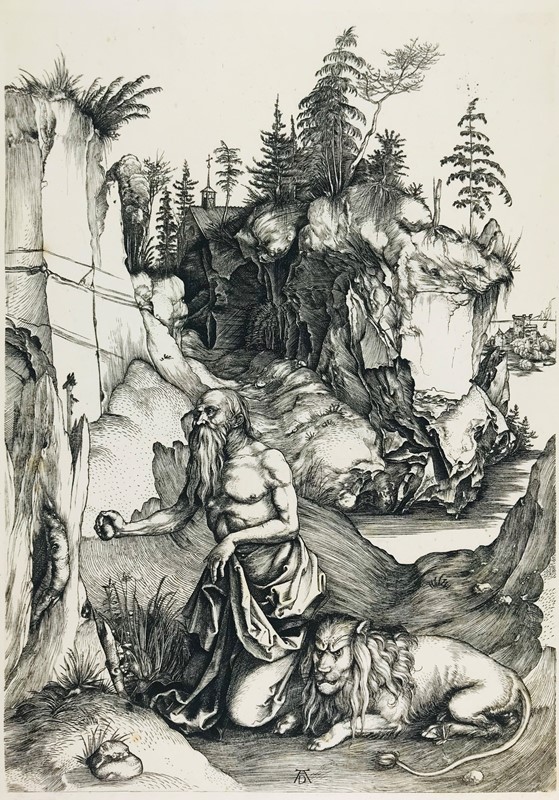





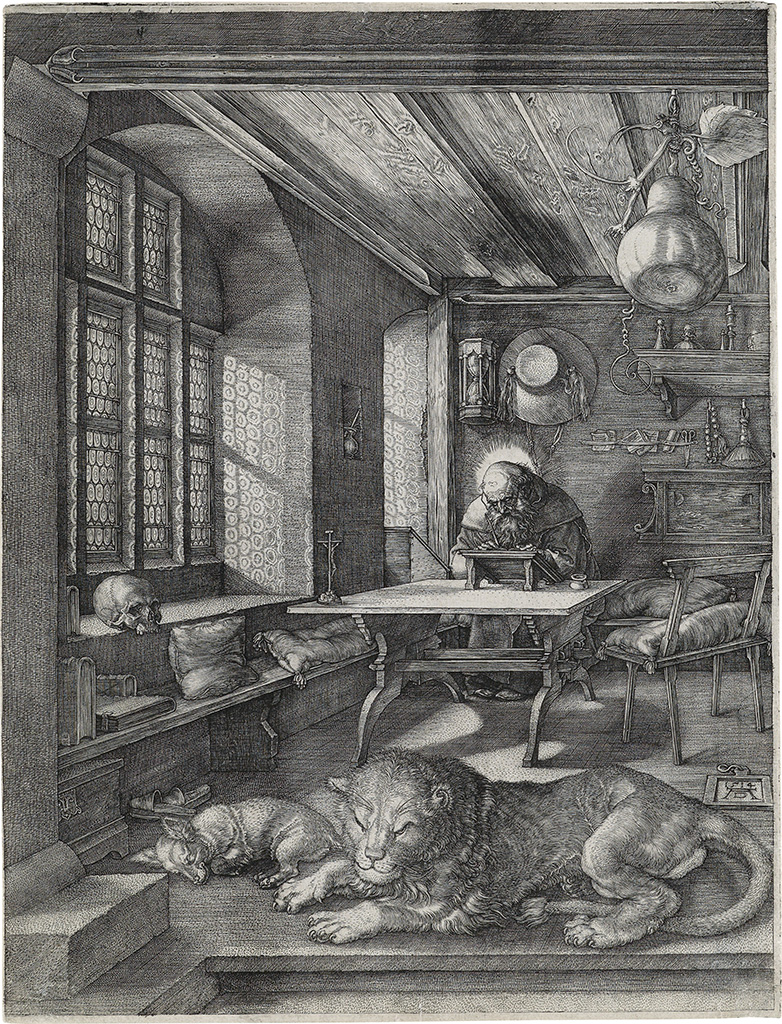
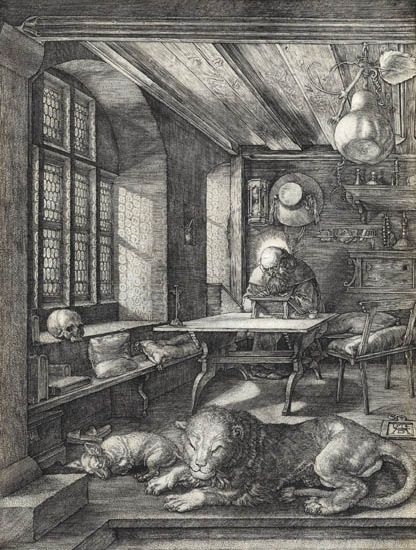
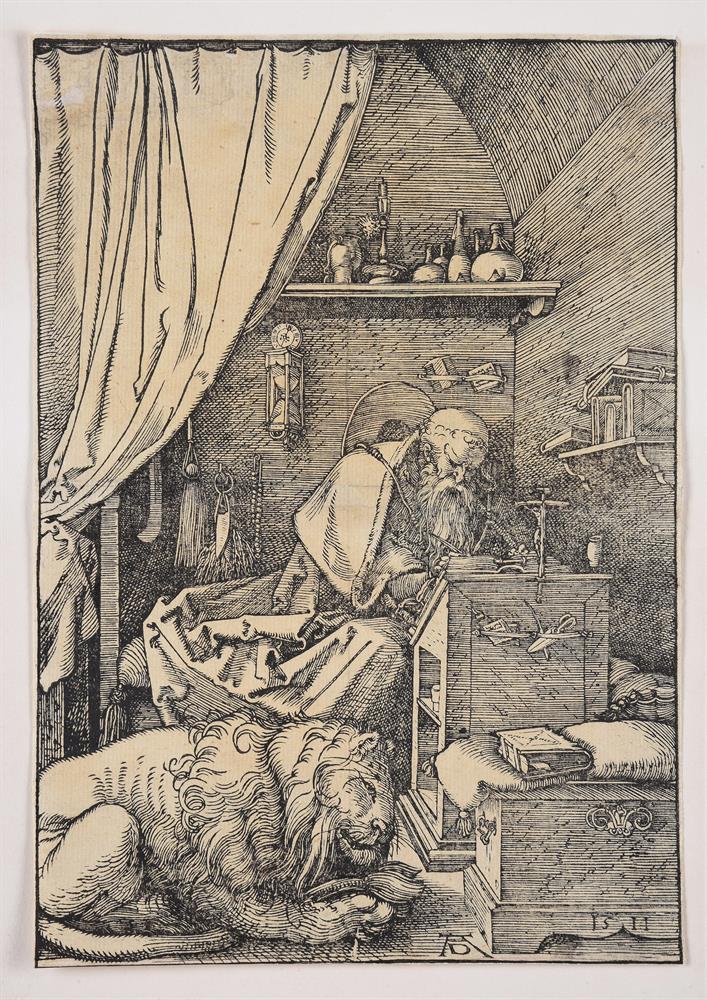




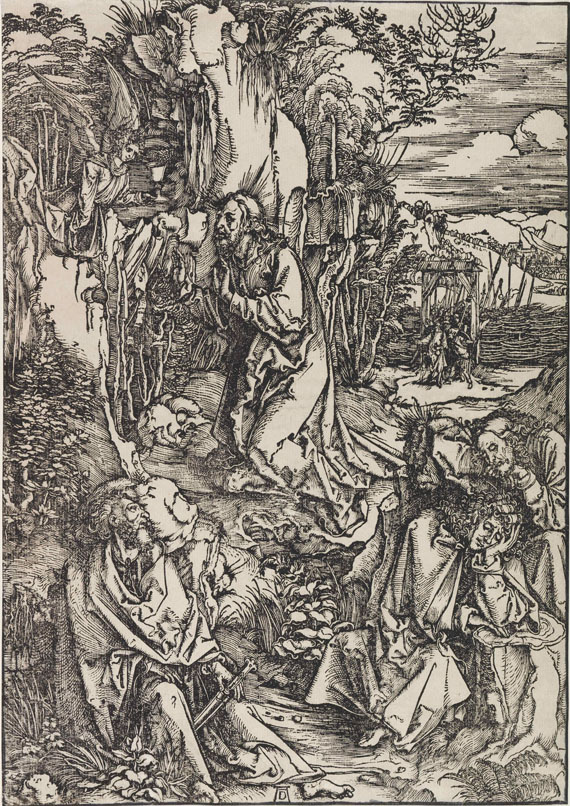
Try LotSearch and its premium features for 7 days - without any costs!
Be notified automatically about new items in upcoming auctions.
Create an alert